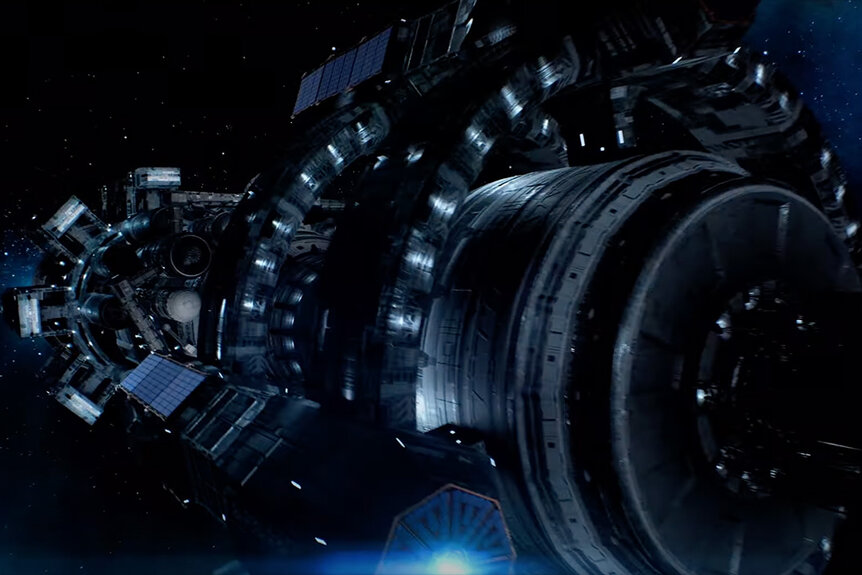Human hibernation hack? New research puts us one step closer to 'The Ark's stasis pods
The ultimate power nap.

The upcoming SYFY thriller The Ark imagines a future in which humanity has launched itself into the cosmos in a last ditch effort to save the species. Of course, things go terribly wrong along the way. We’d expect nothing less from Dean Devlin, the creative mind behind Independence Day and Stargate. But it’s a future which might one day come true.
Hopefully, when we do finally reach for distant worlds it’s with the spirit of hopeful exploration, rather than desperate survival. Regardless of the reason, if we’re ever going to get humans to another star system, we’re going to need a way to keep them alive for so many years. One way to do that is to build a generation ship, a craft within which generations of humans could live out their lives on the long road trip to another world.
Of course, that has its own challenges. We’d need a large enough population to maintain genetic stability for hundreds or thousands of years. We’d need a way to keep them fed, watered, and entertained. And we’d need a way to ensure institutional knowledge is passed down, so they’re not left bewildered when they finally reach their destination. It almost seems easier to send a trained crew the whole way, but that would require some way to maintain them in suspended animation for extended periods.
RELATED: NASA just launched a yeast-filled generation ship to test the effect of space on biology
So far, human hibernation remains squarely in the realm of science fiction, but it might not be that farfetched. Certainly, other animals do it, even animals which aren’t that distantly related to us. It might only be a matter of finding the right combination of biological buttons to push. According to a recent study published in The Innovation, researchers may have just found one of those buttons.
Previous research identified the preoptic area (POA) of the hypothalamus as the part of the brain responsible for thermal regulation in some animals. The question was whether researchers could fiddle with the POA in the primate brain and get the body to shift into something akin to hibernation. Researchers used a synthetic drug called Clozapine N-oxide to change the activity of the POA in three macaque monkeys and found that their bodies kicked into cold defense mode.
Conscious monkeys increased their heart rate, moved around more, and started shivering. In essence, they experienced the symptoms of hypothermia in the absence of freezing temperatures. When the monkeys were anesthetized and given the drug treatment, they experienced a drop in core body temperature, confirming the POA’s role in regulating temperature. The experimental results suggest it’s possible to chemically induce a physiological response similar to hibernation or torpor, states of decreased metabolism which other animals use to wait out less than ideal conditions.
It's worth noting that when conscious mice were given the same treatment, they exhibited decreased heart rate and movement typical of the sort of diminished metabolism you'd expect from hibernation. The monkeys, by contrast, almost appeared to be fighting against hibernation, struggling to keep their bodies warm. The almost opposite responses in mice and monkeys suggests that thermal regulation in primates might be more complex than in other animals and those complexities will need to be accounted for if we want astronauts in stasis pods.
“Our findings reveal both common and species-specific roles of the POA as the thermoregulatory ‘heat loss’ center. We probe the basis of thermoregulation in humans and pave the way for future translational studies from bench to bedside. With the growing passion for human spaceflight, our hypothermic monkey model is a milestone on the long path toward artificial hibernation,” the authors said.
Figuring out how to put astronauts into a sort of artificial hibernation might one day allow us to reach for the stars but it will be beneficial long before we plug Proxima Centauri into our cosmic GPS. Even getting to Jupiter — a destination practically in our own backyard, cosmically speaking — takes about six years to get to. That’s a long time to expect a crew to hang out in an enclosed space, just waiting to get where they’re going.
There are practical applications for artificial hibernation here on Earth, as well. Having a way to keep people in suspended animation would completely revolutionize the medical field by extending the critical periods after trauma or during disease progression.
Until human hibernation is a reality, we’ll have to settle for blanket cocoons and our favorite shows. Check out The Ark, coming to SYFY in February, or tuck into another deep space adventure in Space: 1999, now streaming on Peacock!































